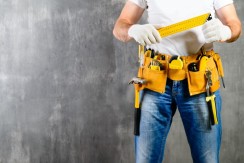
How landlords can play their part in accessible homes
The Equality Act 2010 forbids landlords from discriminating against tenants on the basis of certain protected criteria, including disability.
Many landlords would not dream of doing this anyway, however, they may find themselves unconsciously and inadvertently discriminating against tenants with disabilities through failing to consider wheelchair access for their properties.
Anyone can land up in a wheelchair (especially as they get older)
The raw statistics may not sound very impressive. According to data from NHS England, there are about 1.2 million wheelchair users in the UK. That’s about 1.9% of the UK population as a whole. As is often the case, however, the raw statistics do not necessarily tell the whole story.
For example, they overlook the fact that anyone can end up in a wheelchair on a temporary basis at any point in their life and this temporary basis can actually be quite long. For example, if someone has a bad accident, it may take them months or even years to recover their mobility.
If a home is wheelchair-accessible a landlord can hold on to a good tenant. If it is not, they may have to find a replacement and while that replacement may be just as good, this is not guaranteed.
These statistics are also likely to overlook the people who buy a wheelchair for themselves, because it makes their life easier even if they are not technically classed as needing one.
This is particularly likely to be the case with older tenants and with the UK’s aging population, this is already a significant demographic group and likely to become even more so.
Adapting properties can often be done simply and affordably
Period properties are likely to be difficult to impossible to adapt for wheelchair users, but many landlords will tend to avoid these anyway due to the many other issues involved with owning them, like their need for regular maintenance and there tendency to have minimal energy efficiency.
Modern properties, by contrast, are much more likely to be built with accessibility in mind and that includes wheelchair accessibility. In particular, they are likely to be built with stair-free access to the front door.
If this is not the case, then landlords may wish to consider installing a ramp. This is not just of benefit to wheelchair users; it’s also handy for people with prams and pushchairs.
Internal doorways will also need to be wide enough to allow a wheelchair to pass through. Again, this is often already the case in modern properties. Landlords might also want to think about the types of doors used in the property.
When space is tight, it might be hard to maneuver a wheelchair around a standard door. Internal doors often need to stay in place for fire-safety reasons, but it may be possible to use non-standard door types such as sliding doors to make life easier for wheelchair users.
This may be particularly useful in bathrooms which are typically very small spaces. Wheelchair-friendly bathrooms not only have space for the wheelchair to turn but have space for the wheelchair user to transfer comfortably to the toilet, have a sink which is low enough to use comfortably from a wheelchair and have a large, roll-in shower rather than a bath.
Author Bio
Hopwood House are specialists in UK property investment, with a wide range of investment opportunities including student properties and property investment in Manchester, Liverpool, Sheffield and Leeds.











Author
Homesgofast com
Homesgofast.com is an international real estate portal and news source for Google news. Publishing international real estate, finance, homes and travel-related news and blogs for a targeted audience since 2002. Each news item is circulated to thousands of potential readers each day and is also available to the millions of people who sign up for Google news alerts. Find homes offered for sale and to rent direct from owners and some of the best real estate agents from over 35 countries